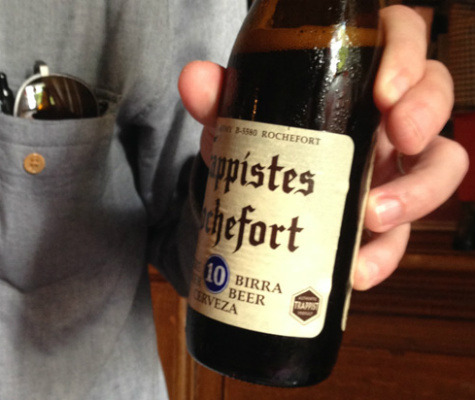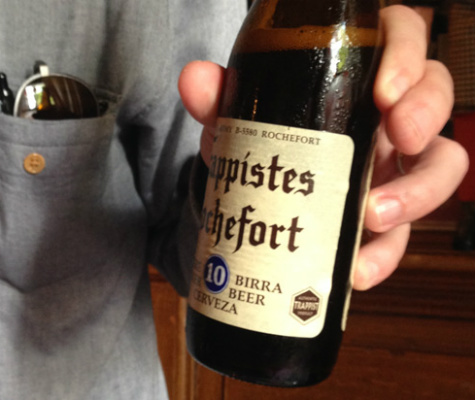Everything You Need To Know About Belgian Beer
Until recently, I was a relative naïf when it came to Belgian beers. Like a lot of American beer drinkers these days, I'd been seduced by hops — the stuff that provides the aromatic, citrusy, and floral features you pick up when drinking the ubiquitous IPA or American Pale Ale styles that are so popular right now in the States. I love the bitterness hops impart, the pungency on the nose, the full, earthy body. I've been enjoying heavily-hopped brews for years now, however, and I'd gotten myself into a rut. It was time to branch out. But where do I go first in this wide world of beer? I'd never given Belgian beers a fair chance; they're too malty, too sweet, I thought. Man, was I wrong.
Everything You Need to Know About Belgian Beer (Slideshow)
Turns out, a trip to Belgium with the good folks at Blue Moon Brewing Company was the kick in the pants I needed. I joined brewmasters Keith Villa, John Legnard, and Tom Hail for a few days in Europe's capital as they prepared for their upcoming 20th anniversary celebration, and boy did these fellas take me to school. My education spanned from Brussels to Bruges, and my homework required me to drink all the beer. All of it.
These guys really know beer. Keith is a plain-spoken mad scientist, a nerd-genius doctor of brew, while John & Tom are brothers from another mother, radiating bro-love, regularly tasked with turning Keith's wild brewing concepts into drinkable reality. The three of them together make up a triumvirate of hetero-lifemates, best friends who are also three parts to one sudsy brain. What follows is some of the knowledge they dropped from their collective mental encyclopedia of beer.
"There are a lot of great traditions in Belgium," says John, and he ain't kidding. "A lot" is a serious understatement. To say you're drinking a Belgian-style beer would be a lot like saying you're eating an American-style hamburger — it doesn't really narrow anything down. In fact, trying to categorize Belgian beer into a manageable list of beer types is a maddening exercise. For as many different breweries as there are in Belgium — and there is an insane number of them, given how small the country is — there are as many discernible styles. To underscore this point, nearly every beer served there is poured into its own uniquely shaped glass, designed by the brewers to highlight the specific characteristics of the individual beer.
One thing to remember is that beer in Belgium is a daily part of life for many people, and is most often consumed with a meal. Different beers are appropriate at different times of the day or with different kinds of food. "It has to go well with a food," says Keith. "Whether it's cheese, or dessert, or the main course, it's got to be food friendly. And that's what distinguishes, I think, Blue Moon beers, and Belgian beers, from other beers in the world."
There are universes contained within the borders of Belgium. Universes of beer. Check out the slideshow for a small taste of a very big, not to mention historic, tradition of Belgian brewing.
Trappist Ales
Trappist ales aren't a style of beer so much as a legal designation. As Keith explained, a Trappist brewery "has to be overseen by a Trappist monk. They're not in a business to make money. They're in business to give jobs to people, to help the community, and the profits are almost always used for philanthropic work in the community." Westmalle, Chimay, and Orval are among the seven Trappist breweries in Belgium.
Abbey Ales
To call a something an "Abbey beer" is really to just acknowledge a brewery's marketing strategy. That said, there is a legal designation of "Certified Belgian Abbey Beer" to indicate a brew licensed under an existing or historical monastic abbey. Broadly, they tend to deal in the classic Trappist styles listed in the next three slides. Leffe is one certified abbey beer that's made it to America through the Stella Artois parent company, InBev.
Read More About Everything You Need to Know About Belgian Beer

